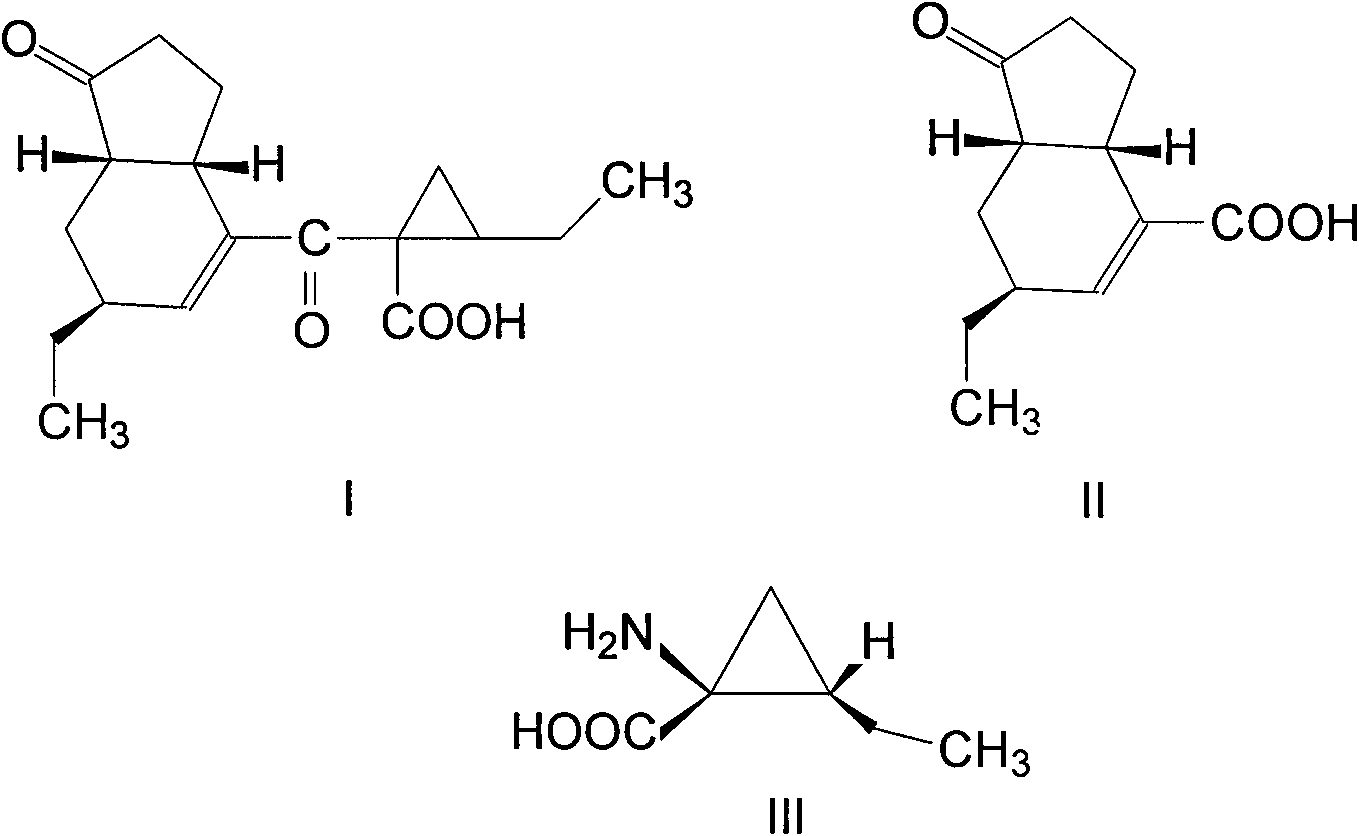Method for extracting coronatine from fermentation liquor by using membrane separation technique
A technology of fermented liquid and coronatin, applied in the direction of membrane technology, semi-permeable membrane separation, chemical instruments and methods, etc., to achieve the effect of mild conditions, simple process and few separation steps
- Summary
- Abstract
- Description
- Claims
- Application Information
AI Technical Summary
Problems solved by technology
Method used
Image
Examples
Embodiment 1
[0028] Example 1 Determination of coronatin content
[0029] High-performance liquid chromatography was used for detection, and the chromatographic working conditions were: chromatographic column Symmetry C18 column (Waters, 4.6×150mm, 5 μm); the mobile phase was 60% methanol solution containing 0.05% phosphoric acid; the detection wavelength was 230nm; the flow rate was 1.0mL / min ; Column temperature 35°C. Standards were provided by the Laboratory of Organic Analytical Chemistry, Hokkaido University, Japan.
Embodiment 2
[0030] Example 2 Preparation of coronatin fermentation broth
[0031] 1. Strains
[0032] Coronatine-producing bacteria Burkholderia cepacia (Burkholderia cepacia).
[0033] 2. Medium
[0034] Incline medium (g / L): glucose 10, beef extract 3, peptone 5, yeast extract 1, agar 15, pH 6.8-7.0.
[0035] Seed medium (g / L): glucose 20, beef extract 20, KH 2 PO 4 4.1, K 2 HPO 4 1.8, MgSO 4 ·7H 2 O0.2, FeCl 3 (1.5μmol / L), pH6.8-7.0.
[0036] Basic fermentation medium (g / L): glucose 10, soybean cake powder 20, urea 10, molasses 10, KH 2 PO 4 4.1, K 2 HPO 4 3.6, MgSO 4 ·7H 2 O 0.2, FeCl 3 (1.5μmol / L), pH6.8-7.0.
[0037] 3. Preparation of coronatin fermentation broth
[0038] The strain is cultured on a slant for 1 day, inserted into a seed medium and cultured for 16 hours, then transferred to a fermentation medium, fermented for 3 days, and placed in a tank to obtain a fermented liquid containing coronatin.
Embodiment 3
[0040] 10L of coronatin fermented liquid is passed through a polyvinyl chloride microfiltration membrane with a pore size of 1 μm to remove impurity particles and some bacterial cells. The operating pressure is 0.2MPa, the temperature is 30°C, the concentration is 20 times, and the dialyzed water volume is 2L; the crude extract after filtration flows through Polyolefin ultrafiltration membrane with a pore size of 0.05 μm removes remaining protein, nucleic acid, and colloidal particle macromolecular impurities in the fermentation broth. The operating pressure is 0.15 MPa, the temperature is 30°C, the concentration factor is 15 times, and the dialysis water volume is 4 L; the same as in Example 1 As determined by the method, the total yield of coronatine was 90%. The permeate was further processed by column chromatography, concentrated and crystallized, and the finished product of coronatin with a purity of 97% was obtained.
PUM
| Property | Measurement | Unit |
|---|---|---|
| pore size | aaaaa | aaaaa |
| pore size | aaaaa | aaaaa |
Abstract
Description
Claims
Application Information
 Login to View More
Login to View More - R&D
- Intellectual Property
- Life Sciences
- Materials
- Tech Scout
- Unparalleled Data Quality
- Higher Quality Content
- 60% Fewer Hallucinations
Browse by: Latest US Patents, China's latest patents, Technical Efficacy Thesaurus, Application Domain, Technology Topic, Popular Technical Reports.
© 2025 PatSnap. All rights reserved.Legal|Privacy policy|Modern Slavery Act Transparency Statement|Sitemap|About US| Contact US: help@patsnap.com

